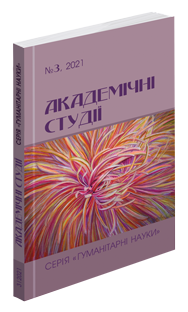Abstract
The presented article is devoted to the actual problem of the current state of the Latin language and to the definition of the peculiarities of its use in various spheres and branches at the present stage. The article emphasizes that in recent decades there has been a growing interest in Latin. Authors made a retrospective analysis of the Latin language formation and development. Based on the study of scientific sources, 3 hypotheses of the origin of Latin have been identified, namely: Italo-Greek, Italo-Celtic, Modestov’s theory. The periods of the Latin language are described and characterized. The specifics of the Latin language functioning in the Middle Ages, XVIII and XX centuries are outlined. The question of the state of Latin as a “dead language” is substantiated. It was found that this issue is quite controversial in modern philological thought and has been the subject of study and research of many domestic and foreign scholars. The presence of a large number of neologisms in the Latin language at the present stage of development of society is considered as proof of the demand, vital activity and relevance of the Latin language. Among the current neologisms are the following: twitterphilia, tik-tokphobia, blogosphere, twitterology. The authors propose latinisms and abbreviations of Latin origin, which are commonly used in Ukrainian and English languages. The status of Latin as a means of international communication is proved. Certain contradictions and objections to the use of Latin in the XX century have been identified. The authors of the article investigated that today the Latin language, despite the status of “dead”, is a compulsory subject in lyceums, gymnasiums and higher education institutions. The institutions of higher education in Kryvyi Rih and the specialties within which Latin is studied are traced and indicated. The peculiarities of literary Latin and the importance of Latin in everyday life are established. The religious aspect of the functioning of Latin is revealed.
References
Васильева Т. Краткий словарь латинских крылатых выражений. Санкт-Петербург : Золотой век, 2003. 335 с.
Звонська Л., Шовковий В. Латинська мова. Київ : Знання, 2006. 711 с.
Мусорин А. Преподавание латинского языка в неязыковом вузе : материалы 1-й метод. конф. профессорско-препод. состава Института экономики и менеджмента. Новосибирск, 1999. С. 32–34.
Подосинов А. Lingua Latina. Введение в латинский язык и в античную культуру. Москва : Флинта, 1998. 354 с.
Шульц Ю. Латинский язык и основы терминологии. Москва : Книга по требованию, 2013. 334 с.

